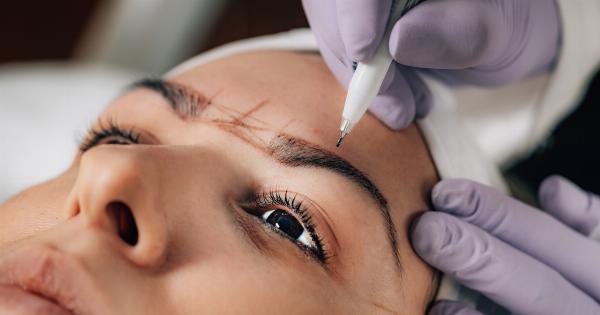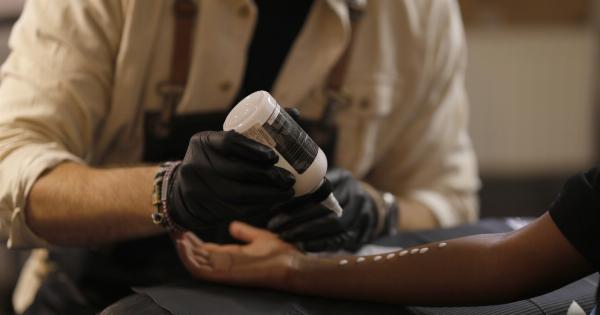Tattoos have gained immense popularity in recent years, with millions of people around the world adorning their bodies with intricate designs and meaningful symbols.
However, it is not uncommon for individuals to outgrow their tattoos or regret the choices they made in their youth. In such cases, tattoo removal becomes a sought-after procedure. Over the years, various techniques have been developed to erase tattoos effectively and safely.
In this article, we will explore the latest advances in tattoo removal techniques and highlight the most promising approaches to getting rid of unwanted tattoos.
Laser Tattoo Removal
One of the most widely used and successful methods for tattoo removal is laser tattoo removal. This technique uses high-intensity laser beams to break down the tattoo ink into smaller particles.
Once the ink particles are fragmented, the body’s immune system gradually eliminates them, leading to the fading and eventual removal of the tattoo.
PicoSure Laser Technology
PicoSure laser technology is a revolutionary advancement in tattoo removal. This innovative laser system delivers ultra-short pulses of energy to target the tattoo ink.
The rapid pulses shatter the ink particles into tiny fragments, which are then eliminated by the body’s natural processes. PicoSure lasers have shown remarkable results in removing even stubborn tattoos that were resistant to traditional laser removal techniques.
Q-Switched Laser Technology
Q-switched laser technology is another significant breakthrough in tattoo removal. This technique utilizes lasers that emit high-intensity light pulses in extremely short durations.
These rapid bursts of energy break down the tattoo ink without causing damage to the surrounding skin. Q-switched lasers have proven to be highly effective in removing tattoos of different colors and pigmentation levels, making them a popular choice among individuals seeking tattoo removal.
Intense Pulsed Light (IPL) Therapy
Intense pulsed light (IPL) therapy, also known as photorejuvenation, is a non-laser technique that can be used for tattoo removal. This method utilizes broad-spectrum light to target and disintegrate tattoo ink.
IPL therapy is particularly effective for removing tattoos with red, orange, and yellow ink. Moreover, it can also help improve the appearance of scars caused by previous tattoo removal treatments.
Surgical Excision
In some cases, particularly with small tattoos, surgical excision may be the preferred method of removal. This technique involves surgically cutting out the tattooed skin and stitching the surrounding skin together.
Surgical excision is usually performed under local anesthesia and leaves a scar, which may fade over time. This method is typically recommended when other tattoo removal methods are not suitable or effective.
Microdermabrasion
Microdermabrasion is a non-invasive tattoo removal technique that uses tiny exfoliating crystals to gently remove the upper layers of the skin.
While microdermabrasion is less effective for complete tattoo removal, it can significantly lighten the tattoo and make subsequent removal treatments more successful. It is often used as a preparatory treatment before laser therapy or to improve the appearance of partially removed tattoos.
Dermabrasion
Dermabrasion is a more aggressive tattoo removal technique that involves the use of a high-speed rotary device to mechanically abrade the skin’s surface. This process removes the top layers of the skin, along with the tattoo ink.
Dermabrasion is a more invasive method and may require local anesthesia. It is suitable for small to medium-sized tattoos but may not be ideal for larger or more complex designs.
Chemical Peel
A chemical peel is a procedure that involves the application of a chemical solution to the skin, causing it to blister and eventually peel off.
While chemical peels are commonly used for skin rejuvenation and acne treatment, they can also aid in tattoo removal. Superficial chemical peels can help fade tattoos and enhance the effectiveness of other removal techniques. However, deeper peels are not recommended for tattoo removal as they can cause scarring.
Cryosurgery
Cryosurgery, also known as cryotherapy, is a technique that uses extreme cold to destroy abnormal tissues, including tattoo ink. Liquid nitrogen or another freezing agent is applied to the tattooed area, causing the ink to freeze and shatter.
The shattered ink is then eliminated by the body’s natural processes. While cryosurgery can be effective for removing small tattoos, it may not be suitable for larger or multicolored designs.
Salabrasion
Salabrasion is an ancient tattoo removal technique that involves rubbing a salt solution onto the tattooed area. The salt solution acts as an abrasive, causing the skin to become raw.
Once the area heals, the outer layers of the skin, along with the tattoo ink, slough off. Salabrasion is rarely recommended today due to its potential risks, such as infection and scarring. Newer and safer methods are now available for tattoo removal.
The Importance of Professional Tattoo Removal
While there are various tattoo removal techniques available, it is crucial to seek professional assistance for safe and effective results.
Professional tattoo removal specialists possess the knowledge, skills, and experience to choose the most suitable method for each individual case. They can provide expert advice and ensure proper aftercare to minimize the risk of complications and optimize the final outcome of tattoo removal.
Regardless of the tattoo removal technique chosen, it is important to have realistic expectations. Complete tattoo removal may not always be achievable, particularly for heavily pigmented tattoos or those with vibrant colors.
Multiple sessions may be necessary to achieve the desired results, and some residual ink or scarring may remain. Therefore, thorough consultation with a qualified professional is essential to understand the potential limitations and outcomes of tattoo removal.


























